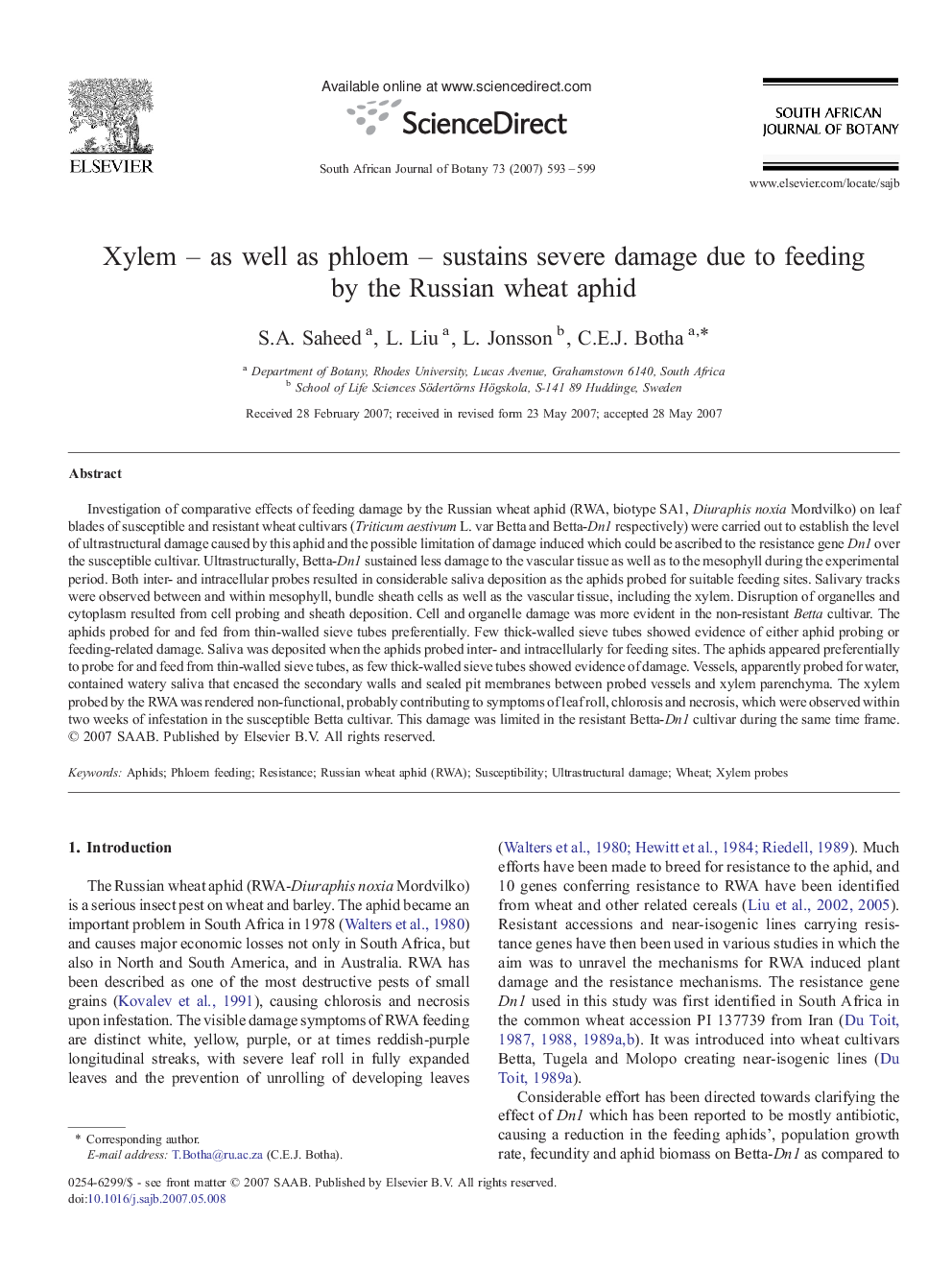| کد مقاله | کد نشریه | سال انتشار | مقاله انگلیسی | نسخه تمام متن |
|---|---|---|---|---|
| 4521834 | 1625197 | 2007 | 7 صفحه PDF | دانلود رایگان |

Investigation of comparative effects of feeding damage by the Russian wheat aphid (RWA, biotype SA1, Diuraphis noxia Mordvilko) on leaf blades of susceptible and resistant wheat cultivars (Triticum aestivum L. var Betta and Betta-Dn1 respectively) were carried out to establish the level of ultrastructural damage caused by this aphid and the possible limitation of damage induced which could be ascribed to the resistance gene Dn1 over the susceptible cultivar. Ultrastructurally, Betta-Dn1 sustained less damage to the vascular tissue as well as to the mesophyll during the experimental period. Both inter- and intracellular probes resulted in considerable saliva deposition as the aphids probed for suitable feeding sites. Salivary tracks were observed between and within mesophyll, bundle sheath cells as well as the vascular tissue, including the xylem. Disruption of organelles and cytoplasm resulted from cell probing and sheath deposition. Cell and organelle damage was more evident in the non-resistant Betta cultivar. The aphids probed for and fed from thin-walled sieve tubes preferentially. Few thick-walled sieve tubes showed evidence of either aphid probing or feeding-related damage. Saliva was deposited when the aphids probed inter- and intracellularly for feeding sites. The aphids appeared preferentially to probe for and feed from thin-walled sieve tubes, as few thick-walled sieve tubes showed evidence of damage. Vessels, apparently probed for water, contained watery saliva that encased the secondary walls and sealed pit membranes between probed vessels and xylem parenchyma. The xylem probed by the RWA was rendered non-functional, probably contributing to symptoms of leaf roll, chlorosis and necrosis, which were observed within two weeks of infestation in the susceptible Betta cultivar. This damage was limited in the resistant Betta-Dn1 cultivar during the same time frame.
Journal: South African Journal of Botany - Volume 73, Issue 4, November 2007, Pages 593–599